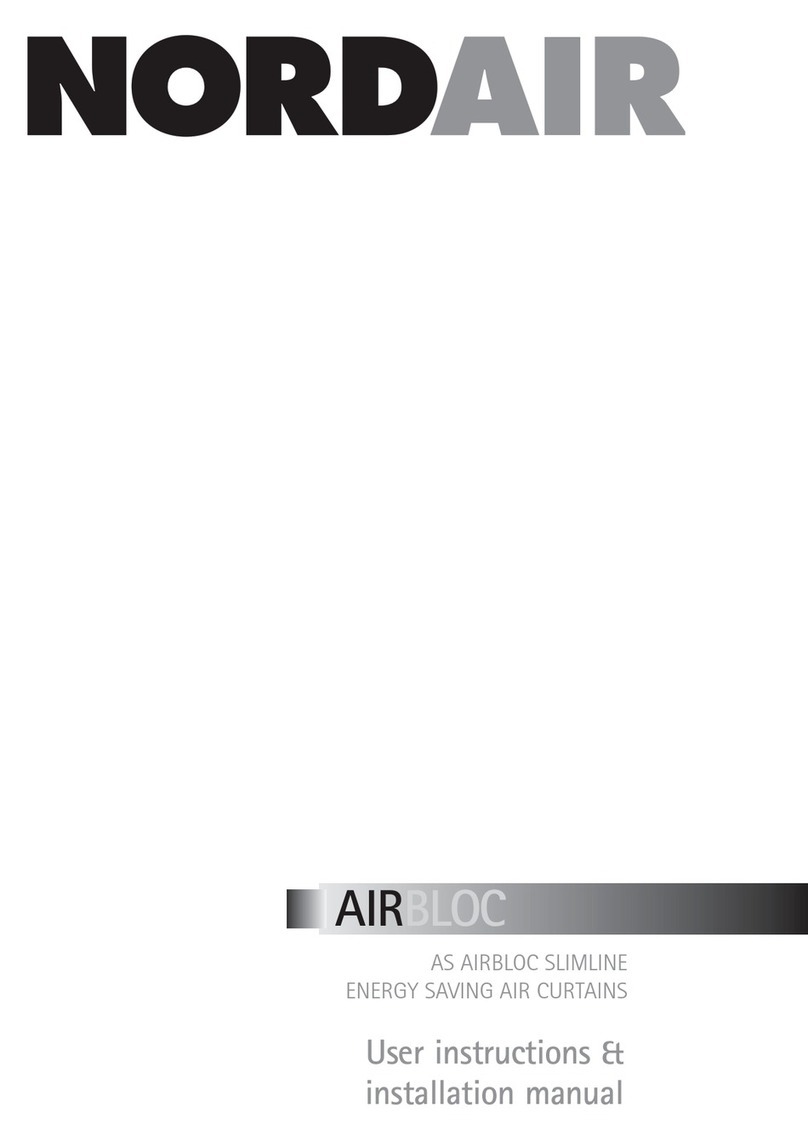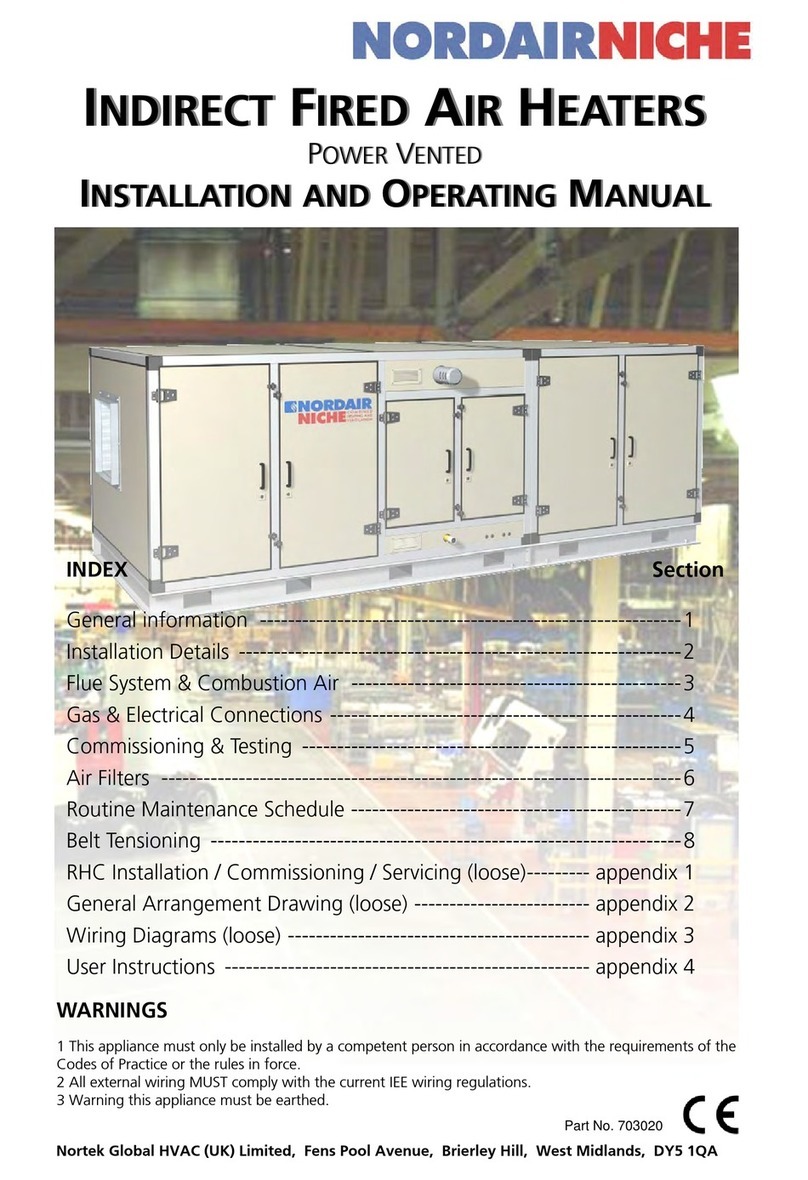2
1. General Information
Before installation, check that the appliance as
described on the packaging label is in
accordance with the correct type and model as
specified on the data plate and complies with the
site requirements.
Please read this document before commencing
installation.
Check that the local distribution conditions of
electricity supply, type of gas and pressure of the
appliance are compatible.
The installation must comply with the
requirements and recommendations of British
Standards BS 6230 1991. “Installation of Gas
Fired Forced Convection Air Heaters for
Commercial and Industrial Space Heating”.
The installation must also be in accordance with
relevant requirements of The Gas
safety (Installation and use Regulations) and
(Amendment regulation 1990) and the Building
and Electrical Regulation (in GB and IEE
Regulations). The requirements of the Local
Building Standards Office, the premises
Insurance undertaking and the Fire Authority
must also be observed.
Unauthorised modification of this appliance or
departure from use in the manner for which it
was intended by the manufacturer or installed in
a manner contrary to these instructions, may
constitute a hazard or jeopardise all warranties.
Deviations should only be carried out after formal
consent has been obtained from the
manufacturer.
Ensure the environment in which the air heater
will be installed will not create a hazard, i.e,
where excessive (volatile) dust, flammable or
corrosive substances and/or vapours and
combustible materials may be present. When
installing outdoor heaters care must be taken to
ensure that unauthorised access to the building
cannot be gained via the appliance or its
ductwork system.
This appliance has been tested and set
according to the data plate before leaving the
factory.
After installation the appliance must be fully
commissioned and the settings re-checked.
This appliance incorporates indirect gas fired
heat exchange modules. The modules are
purpose designed to be incorporated into air
heating appliances and the modules comply with
CE directives.
This appliance is suitable for operation within a
-10°C to +40°C temperature range.
Invalidation of guarantee
The following misuses or maltreatment of Nordair
Niche equipment will render all guarantees, as
set out on the Conditions of Sales, void.
• Failure to install, set up or put to work any part
of the equipment as specified in Nordair Niche
installation, operation and maintenance
instructions.
• Attempting to operate motors and other
electrical equipment with an electrical supply
other than that designated on the motor name
plate, or failing to connect and protect such
equipment in accordance with I.E.E
Regulations and local by-laws.
• Failure to notify Nordair Niche of equipment
damaged on receipt in writing within five days.
• Failure to run equipment within the design
specifications as notified at the time of order.
• Modifications to designed arrangement or
performances without the prior written approval
of Nordair Niche.
• Damage caused to equipment on site through
lack of adequate protection from the elements
or misuse by other trades.
• Failure to observe all normally accepted
engineering practices during installation,
commissioning and subsequent operation of
equipment.
IMPORTANT NOTE
DO NOT USE IMPACT DRIVERS ON PANELS
OR DOOR CLAMPS!
USE M5 ALLEN KEY ONLY!

























